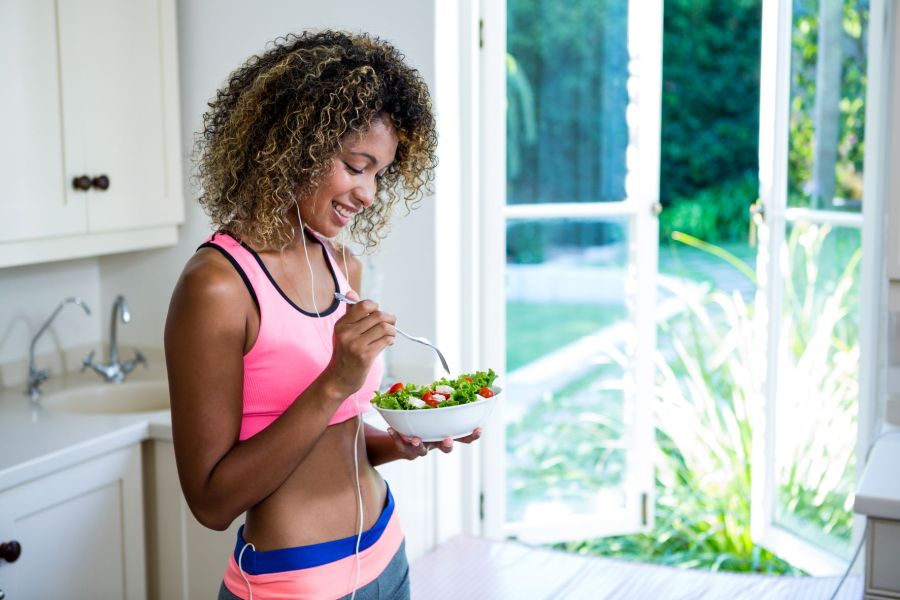Fed up with feeling bloated? This simple 7 day diet plan from nutritionist Christine Bailey will help you reduce bloating fast so you can feel lighter and more comfortable…
If your tummy often feels full and uncomfortable, you’re not alone. Research suggests that at least 10-30 per cent of the population has an issue with bloating.
There can be a number of reasons for this, such as imbalances in the gut bacteria, constipation, hormone fluctuations, excess salt in the diet and even stress, but bloating is often due to a build-up of gas in the abdomen, which can be the result of an overgrowth of certain bacteria in the small intestine or colon.
Foods known as high-FODMAP foods are poorly absorbed by the small intestine, which means they pass into the bowel and are fermented by bacteria. This causes the bowel to distend, by drawing in more fluid and generating more gas. The result? A painful, swollen tummy.
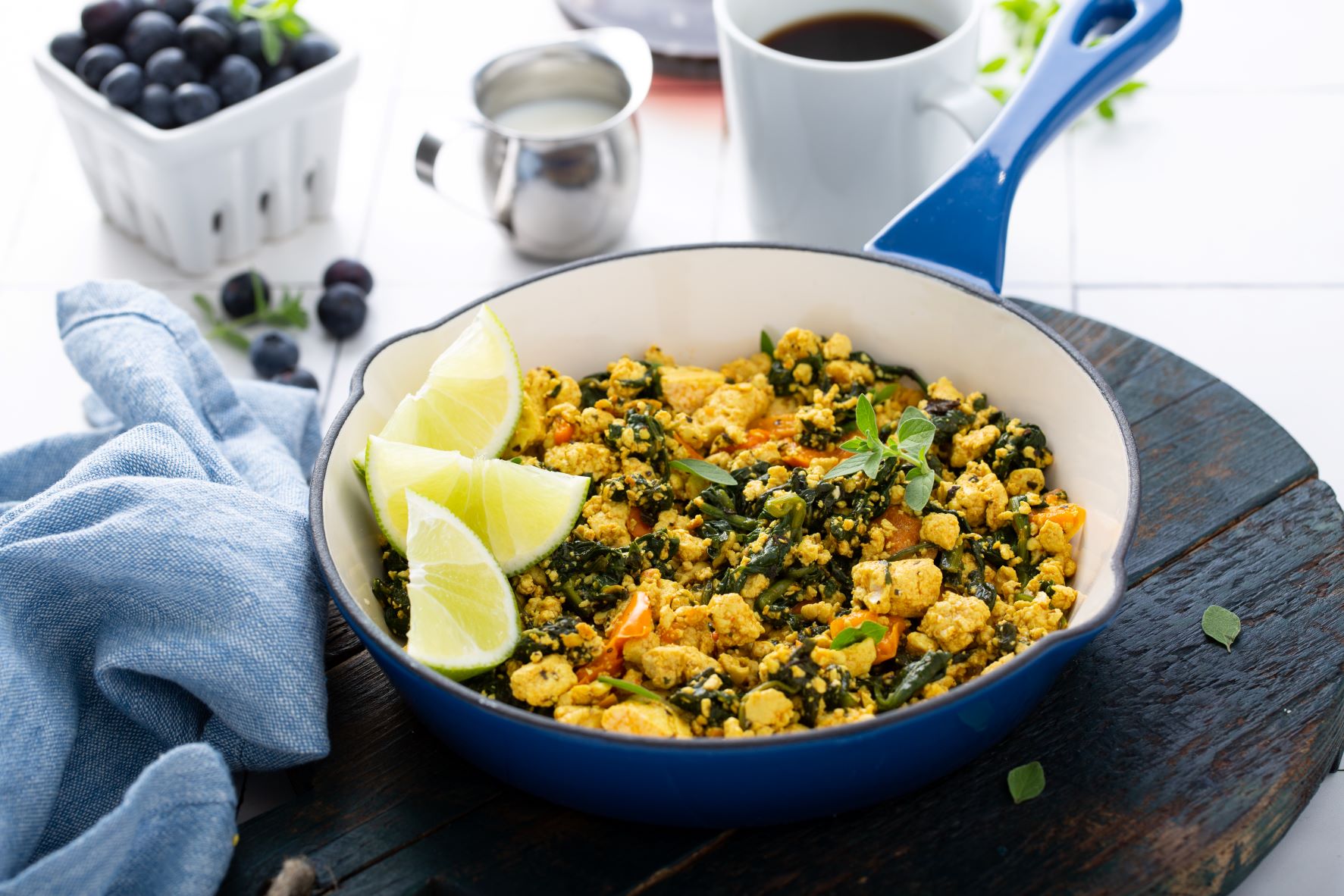
Best foods to reduce bloating fast
A low-FODMAP diet plan could help to reduce bloating. FODMAP is an acronym that stands for fermentable oligosaccharides (fructans and galacto-oligosaccharides found in beans, peas, lentils, etc), disaccharides (eg lactose, found in certain dairy products like milk), monosaccharides (fructose, found in honey, certain fruits and vegetables) and polyols (sugar alcohols like sorbitol, mannitol, xylitol).
Developed by researchers at Monash University in Australia, the main principle of the diet is to temporarily replace foods that are high in FODMAPs with low-FODMAP foods that are more easily broken down by the body. This can relieve digestive distress and decrease the fermentation of sugars, which contribute to gas and bloating, in the colon.
The diet is typically followed for four-to-six weeks while you identify the key culprit foods and address any other underlying gut issues. After that, a reintroduction plan is followed. Ideally, when following a low-FODMAP programme, it is best to work with a registered nutritionist or dietician.
Which foods are high FODMAP?
The list of high FODMAP foods is extensive and the impact of certain foods is also influenced by portion size. Common problematic foods include honey, apples, pears, onions, garlic, cabbage, milk, ice cream, wheat, barley, rye, cashew and pistachio nuts, lentils and beans, and artificial sweeteners such as sorbitol. The most comprehensive list of the high- and low-FODMAP foods can be found on the Monash University FODMAP app (£6.99 from App Store).
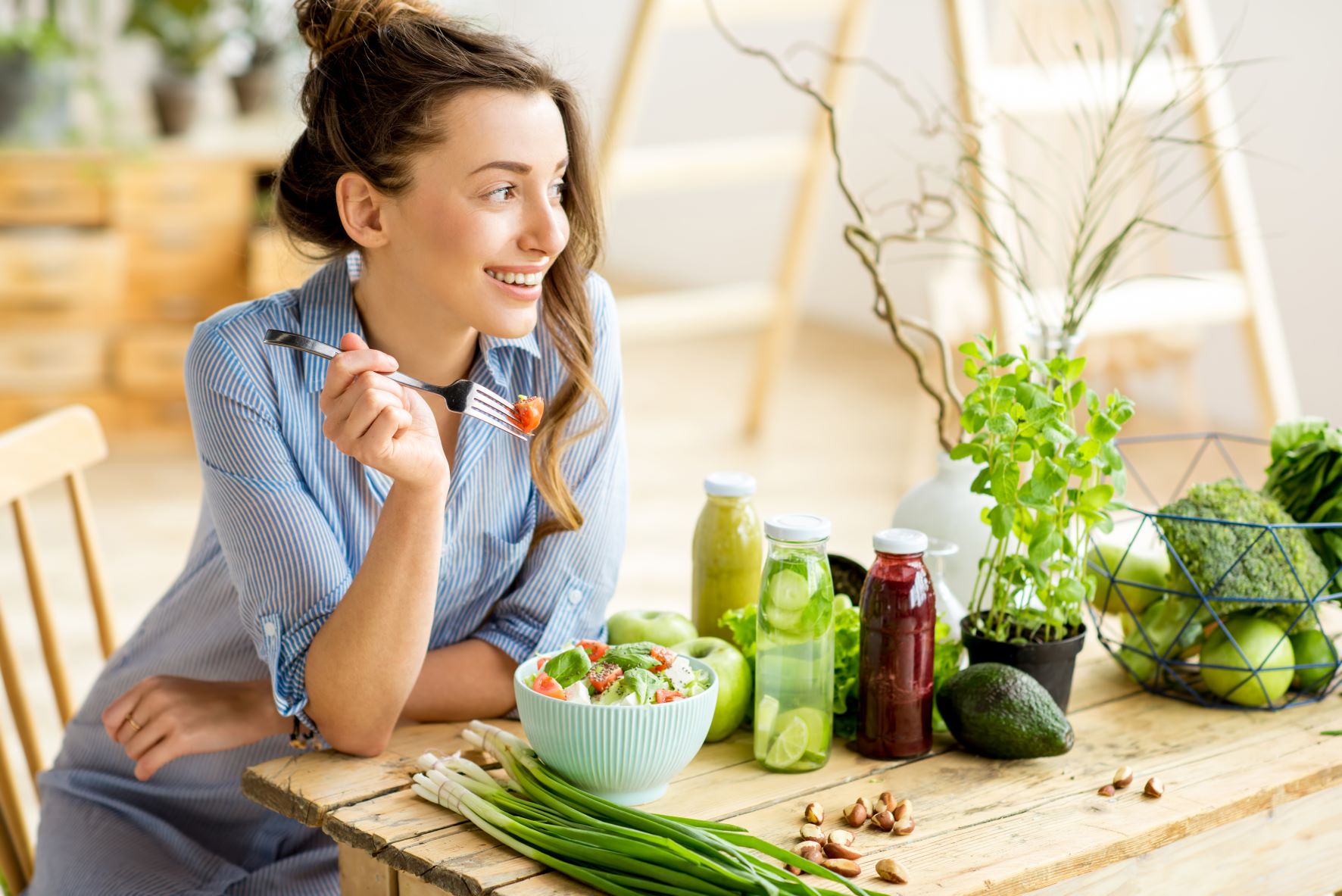
What causes bloating?
Here are some other things that can lead to bloating.
Hormone fluctuations
Hormone fluctuations during your cycle can be to blame. The issue is normally in the second half of your cycle (the luteal phase). At this point, oestrogen initially dips before rising again and progesterone becomes more prominent. Higher levels of oestrogen can lead to water retention. To make matters worse, progesterone influences your bowel movements. When it is higher, many women experience constipation and bloating. However, when it dips, around menstruation, you may experience diarrhoea.
Excess salt and/or dehydration
Excess salt in the diet and/or dehydration can further exacerbate the problem. Both dehydration and electrolyte imbalances can lead to water retention. So, while it may seem counterintuitive, you need to drink plenty of water through the day and avoid adding salt to meals.
Eating too quickly
Eating on-the-go or eating too quickly can mean you might ingest a lot of air and fail to digest your food properly. This can also happen if you chew lots of gum or drink carbonated beverages. Sit at a table, eat slowly and chew more. And try smaller portions.
Consuming sugar alcohols
Foods and drinks sweetened with sugar alcohols, such as mannitol, xylitol and sorbitol, can cause gas because these alcohols can be hard for the body to digest. Some of these are regularly added to sports drinks and sports bars, so check ingredients. Look for alternative sweeteners such as stevia.
Not having regular eating patterns
Erratic eating patterns, too little fibre, not enough water, stress and inactivity can contribute to constipation. If you’re not opening your bowels daily you’re likely to experience more pain, gas and bloating. Taking the probiotic lactobacillus rhamnosus GG, plus magnesium and vitamin C supplements, can improve bowel movements.
Not exercising regularly
While you may feel uncomfortable simply going out for a walk or performing other cardio exercise, moving a little can be helpful for eliminating gas from your bowels. You could try doing some daily yoga stretches, too.
Stress and anxiety
Feeling anxious or stressed puts your body into ‘fight or flight’ mode, in turn, reducing your ability to digest food properly. If this happens regularly then it is likely to increase your risk of bloating. Certain probiotics may be helpful for easing both stress and bloating (eg lactobacillus acidophilus Rosell-52), but it also important to find ways to relax and unwind.
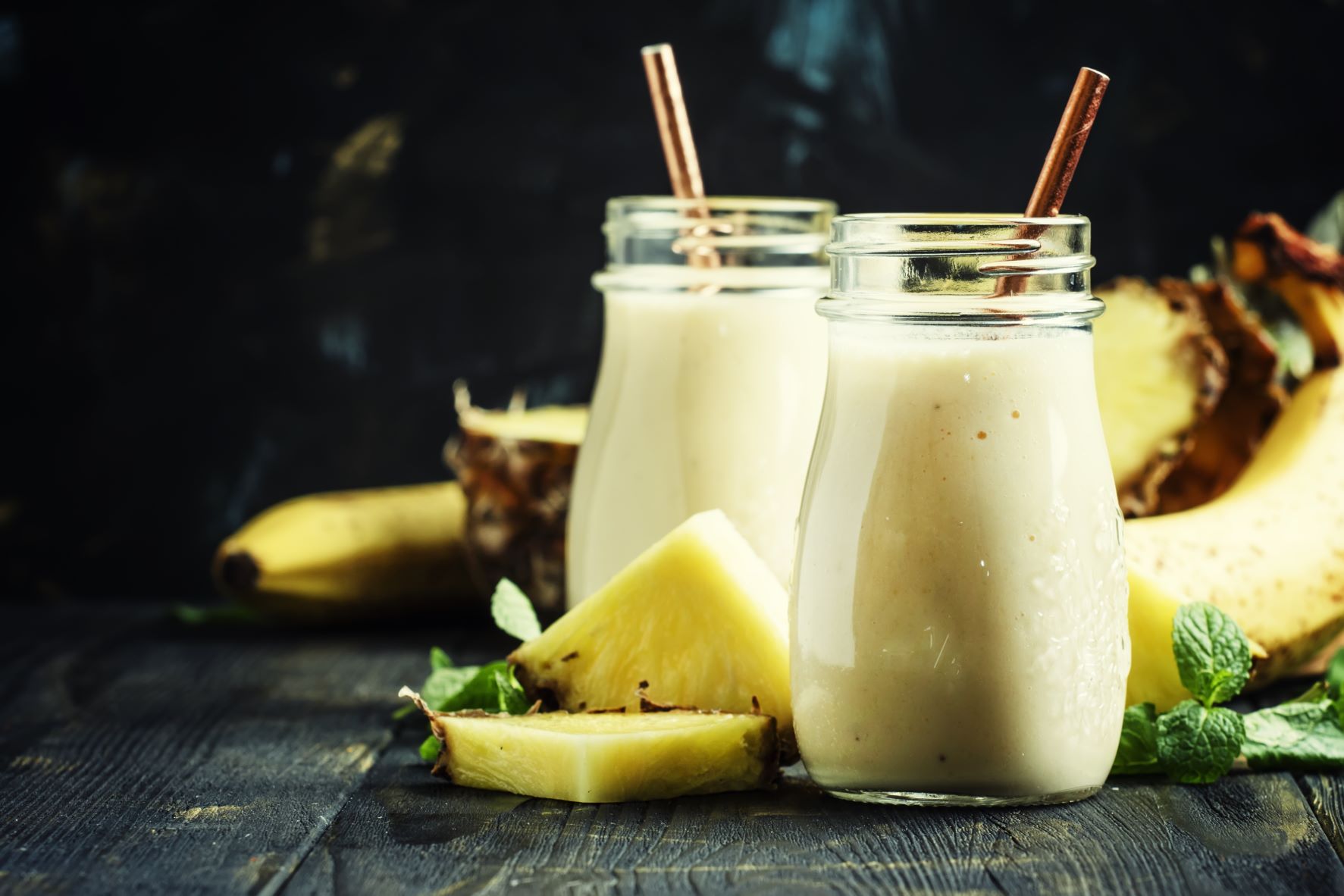
7 day diet plan to reduce bloating
Try this 7 day diet plan, complete with low-FODMAP meal ideas, to reduce bloating fast…
MONDAY
- Breakfast: Gluten-free low-FODMAP granola (try Bio&Me) with lactose-free yoghurt.
- Lunch: Poached salmon fillet with lettuce, cucumber, 3 cherry tomatoes, pitted olives, grated carrot.
- Dinner: Turkey meatballs – make with 100g turkey mince and smoked paprika. Pan-fry until golden, then pour over 100g chopped tomatoes. Serve with rice, steamed green beans and side salad.
- Snack: Rice cakes with tahini.
TUESDAY
- Breakfast: Tropical protein shake – make with coconut milk, frozen pineapple chunks, whey or pea isolate protein powder.
- Lunch: Tuna niçose salad – steam 2 new potatoes and a handful of sliced green beans. Add to a salad of lettuce, cucumber, olives, canned tuna and a hard-boiled egg.
- Dinner: Tofu noodle bowl – stir-fry 100g plain tofu chunks in oil then add strips of carrot, chopped pak choi, green pepper, tops only of spring onions, beansprouts, crushed ginger and tamari soy sauce. Serve with cooked rice noodles.
- Snack: Plain soy yoghurt or low-lactose yoghurt with sliced kiwi fruit.
WEDNESDAY
- Breakfast: Poached eggs with gluten-free toast or sourdough bread.
- Lunch: Spinach salad with cucumber, carrots, red pepper and 100g cooked prawns, ¼ small avocado (30g), with lemon and olive oil dressing.
- Dinner: Roast chicken with vegetables – roast a chicken breast with sliced courgette, aubergine and green peppers, 100g canned tomatoes and some smoked paprika.
- Snack: Gluten-free oat cakes with 2 tsp peanut butter.
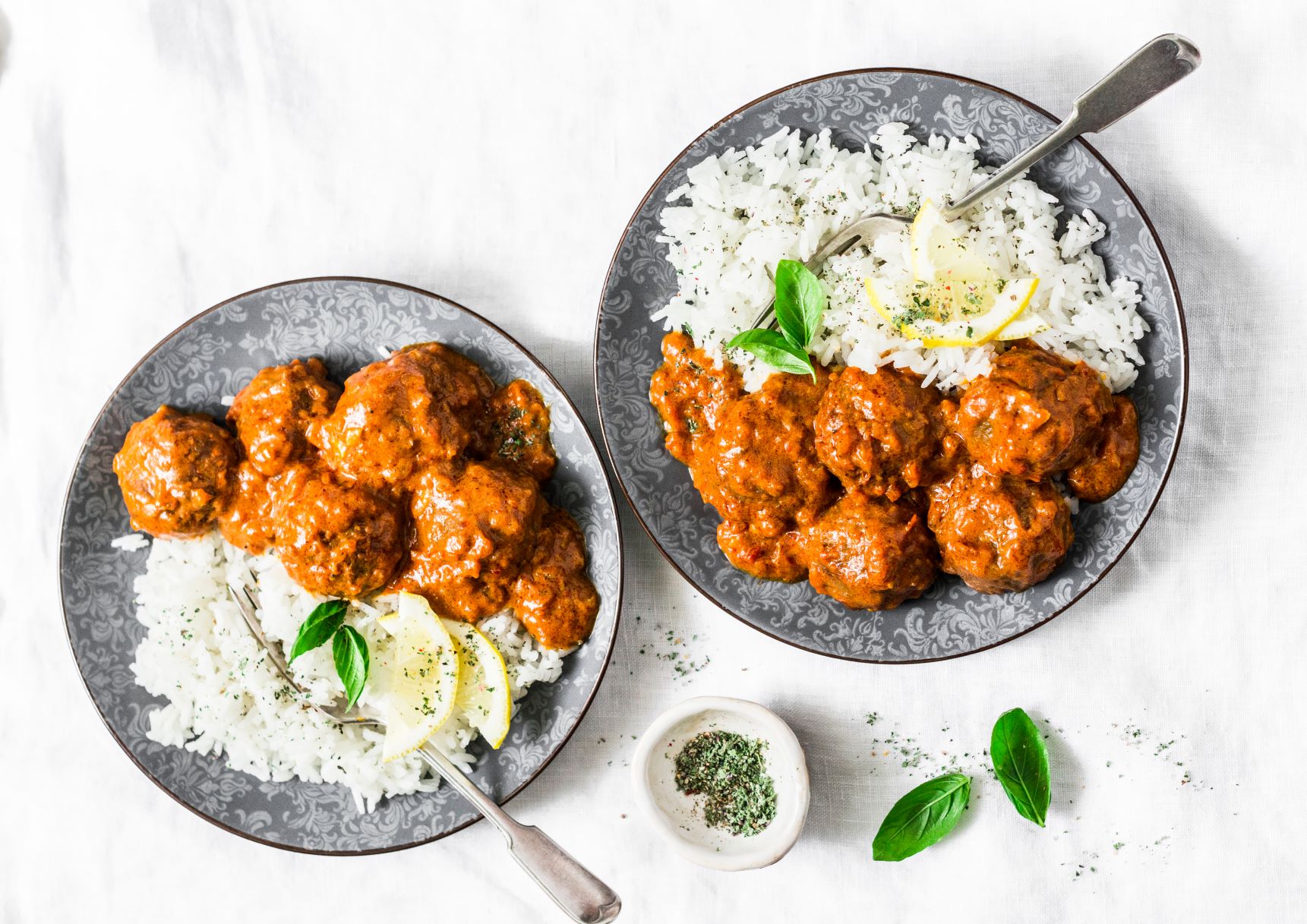
THURSDAY
- Breakfast: Scrambled tofu – scramble 100g tofu in a pan with tamari soy sauce, spinach and chopped tomatoes.
- Lunch: Quinoa salad (keep half for tomorrow) – cook 100g quinoa. Place in a bowl with chopped mint, coriander and parsley, grated carrot, cucumber and olives. Drizzle with lemon juice and olive oil. Serve with cooked salmon or tofu.
- Dinner: Courgette and feta frittata – beat together 2 eggs with 2 tbsp lactose-free milk and season. Sauté a handful of spinach leaves and grated courgette, to soften. Pour over the eggs and scatter with 30g feta cheese. Bake in the oven until golden. Serve with lettuce.
- Snack: Green smoothie made with coconut milk, spinach, pineapple chunks, whey or pea isolate protein powder.
FRIDAY
- Breakfast: Overnight Bircher oats (soak 50g gluten-free oats and 1 tbsp mixed seeds in coconut milk overnight), topped with dairy free yoghurt and 4 sliced strawberries.
- Lunch: Leftover quinoa salad with cooked prawns.
- Dinner: Chicken pesto pasta – make your own pesto by blitzing together a cupful of basil leaves, 30g pine nuts, lemon juice and garlic infused olive oil. Toss through gluten-free pasta and serve with cooked chicken, steamed green beans and carrots.
- Snack: Plain popcorn.
SATURDAY
- Breakfast: Buckwheat protein pancakes (blend 30g buckwheat flour with a scoop whey or pea isolate protein powder, around 80-100ml coconut milk, ½ banana and ½ tsp baking powder). Heat some oil and cook in batches. Serve with a little maple syrup and handful of blueberries.
- Lunch: Chicken and salad gluten-free wrap.
- Dinner: Steak with oven-roasted vegetables – grill a fillet steak, serve with roasted courgettes, green peppers, sweet potato wedges and salad.
- Snack: Satsuma, 2 squares of dark chocolate.
SUNDAY
- Breakfast: Omelette with spinach and sliced green pepper
- Lunch: Griddled sourdough or gluten-free bread with poached egg and salad.
- Dinner: Roasted new potatoes served with canned crab (or prawns), mixed with mayonnaise and chilli flakes. Serve with steamed carrots and green beans.
- Snack: Small chunk of hard cheese and gluten-free crackers.
Words: Christine Bailey | Images: Shutterstock

